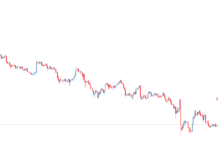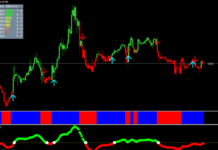Like with any timeframe, trading on daily charts has both pros and cons. The main problem is that it offers a few signals. The best thing about D1 trading is that it’s enough to open a chart just once a day to estimate the trading situation. There is no denying that shorter timeframes provide much more entry signals. However, trading on short timeframes takes a great amount of experience and self-discipline.
Before reading the article and writing your questions in the comments section, I recommend to watch this video. It’s not long but covers the biggest part of questions on the topic.
Table of Contents
Key features
Graphic and candlestick patterns are easier to benefit from on higher timeframes. At the same time, D1 trading is characterized by high stop losses and take profits which scares away many traders. Another reason why novice traders tend to ignore D1 charts is that any price change on shorter intervals is perceived by them as a lost profit, hence their ambition for a more intense trading.
The truth is, for D1 trading, you need to have more start-up capital than for 1H trading. An easy solution to this obstacle is to open a cent account.
As for the intensity of trading, you’ll have to monitor the chart around-the-clock opening 30-100 trades a day. This doesn’t mean, though, that you’ll make more money than as if you opened 2-3 trades over the same period. Two or three trades on a D1 chart can earn you up to 2,000 points. Now think how many trades a scalper would have to initiate to earn the same amount. They would have to work very hard for the same result!
D1 trading strategy #1
Trading on a D1 chart is practically the same as trading on shorter timeframes. You should open a trade once the correction has come to an end. There are multiple ways to identify the end of a price correction. Below I’ll talk about how to use indicators to do that.
To search for corrections, we’ll need 2 tools:
- 25-period exponential moving average on a W1 chart.
- Parabolic SAR indicator on a D1 chart.
Plus, you need to pay attention to candle patterns as well. This is how you trade:
- On a W1 chart, identify where the price is relative to the 25-period exponential moving average. We’re looking for a situation when the price is above the EMA line. If the price is below the EMA line or has just broken it, we need to wait for two bullish candles to occur.
- Now we need to identify corrections. If there is an uptrend, even 1 bearish candle may signal a correction. In our case, the correction lasted for 3 weeks.
- If a series of black candles is followed by a white candle, the correction is over. Once you see a bullish candle in the uptrend, you can switch to a D1 chart.
- On the D1 chart, enter the market at a reversal pattern (piercing pattern, hammer, etc.). Ideally, a reversal pattern must form within a week after the end of the correction.
If the market is dominated by a downtrend, the opposite rules apply. You need to open a trade with a stop loss of 50-100 pips. Put your stop loss under the low (when a long entry signal occurred). You can use a fixed take profit which must be 5-10 times higher than your stop loss. However, I highly recommend that you use a trailing stop.
You can start trailing your order after the Parabolic indicator has started to plot points under the price (for long positions). After each new candle, move your stop loss following the Parabolic points.
If you have an open order, you can continue searching entry signals until the trend changes its direction.
Unfortunately, not all trades opened by using this method are profitable. You may suffer a series of losing trades and then cover your losses with profits from one winning trade.
D1 trading strategy #2
Strategy #2 uses two currency pairs, EUR/USD and GBP/USD. With this trading method, you can earn 50-70% of your investment amount without spending too much time on trading.
Here are the tools you’ll need for Strategy #2:
- Parabolic indicator.
- Volumes indicator.
- 5-period simple moving average plotted over the Volumes indicator.
To install the SMA line, add it to the chart from the “Navigator” window and choose “First Indicator’s data” in the “Apply” field.
Here is a set-up for a long trade:
- Parabolic is plotting points above the price level.
- On the Volumes chart, a green bar must be above the 5-period SMA. Color green is indicative of a dramatic volume increase. Combined with the Parabolic’s indications, it’s a strong signal of an upcoming market change.
This strategy simultaneously uses two currency pairs. However, you need to open trades separately.
Move your stop loss after the Parabolic indicator. If Parabolic starts to plot points above the price level, you need to close your long trade manually. Use a fixed stop loss between 60 and 90 pips. For EUR/USD, set a stop loss at 90 pips. For GBP/USD, the optimal stop loss is 60 pips. Your take profit must be 3 times bigger than your stop loss. Feel free to use a trailing stop.
This strategy won’t take much of your time. Check out a few details I’d like to draw your attention to:
- Following a large price swing, Parabolic may cross the zero level. Parabolic usually crosses a shadow or body of a candle. In this case, you should ignore the entry signal, even if other entry conditions are met.
- Parabolic is moving up and down, while 2 green bars of the Volumes indicator is above the 5-period SMA. This situation is usually the result of a sharp shift in price. This is a lagging signal which should be ignored.
D1 trading strategy #3
And last but not least. Strategy #3 uses the Williams Percent Range (WPR) indicator at -90, -50 and -10 levels. To make money with this trading approach, you need to dedicate to trading just 15 minutes per day.
For a long entry, one of the following conditions must be met:
- The WPR line crossed the -50 level from below. You should open a trade once the next candle has closed.
- The WPR line crossed the –10 level from above, with a candle closing between -10 and -50. Look at the color of the candle that crossed -10. If it’s white, you can open a long trade right away. Otherwise, you should wait till the next candle closes. Note that the next candle must be white as well.
Place a stop loss under the bottom of the candle. As for a take profit, set it about 300 pips from your entry point.
If you’re acting on the second entry signal, make sure the price continues in the right direction after you’ve opened a trade. Otherwise, you should close the trade manually.
For short positions, the opposite rules apply. Go short if the WPR line crosses -15 from above (or -90 from below) and a candle closes between -50 and -90.
You should only increase your position size if a new signal in the direction of your trade occurs. If you see an entry signal in the opposite direction, hurry to close your current trade.
As you can see, D1 trading provides pretty good money-making opportunities. D1 timeframe is an ideal option for those who view Forex trading as an additional source of income. First, D1 trading doesn’t require you to constantly monitor charts. Second, it’s not too exhausting. The only drawback of trading on high timeframes is that you need a bigger initial deposit.
If you’re an aspiring Forex trader that lacks experience and emotional stamina, long-term trading on D1 charts is exactly what you need.






Great strategy, I guess I will just need to practice this. How are news likely toaffect the strategy
This is so neatly arranged and explained. Thumbs up
Hi coach! Thank you for such a well put article. How is the strategy affected by different time frames. Can I try it out in shorter time frames
Thank you very much for your videos Admin… really amazing , aI cant imagine you shared all these for free… success for you
Very informative and easy to understand, thank you!
Hi Rayner, I believe I’ve read most of your articles on your website and they have been of tremendous help.
Coach thx for the videos and the courses that you publish on your website. I enjoy watching them cause they really helpful.
Great skills, combining forex skills and great writing skills only goes a step further explaining how a talented guy you are
Thank you!